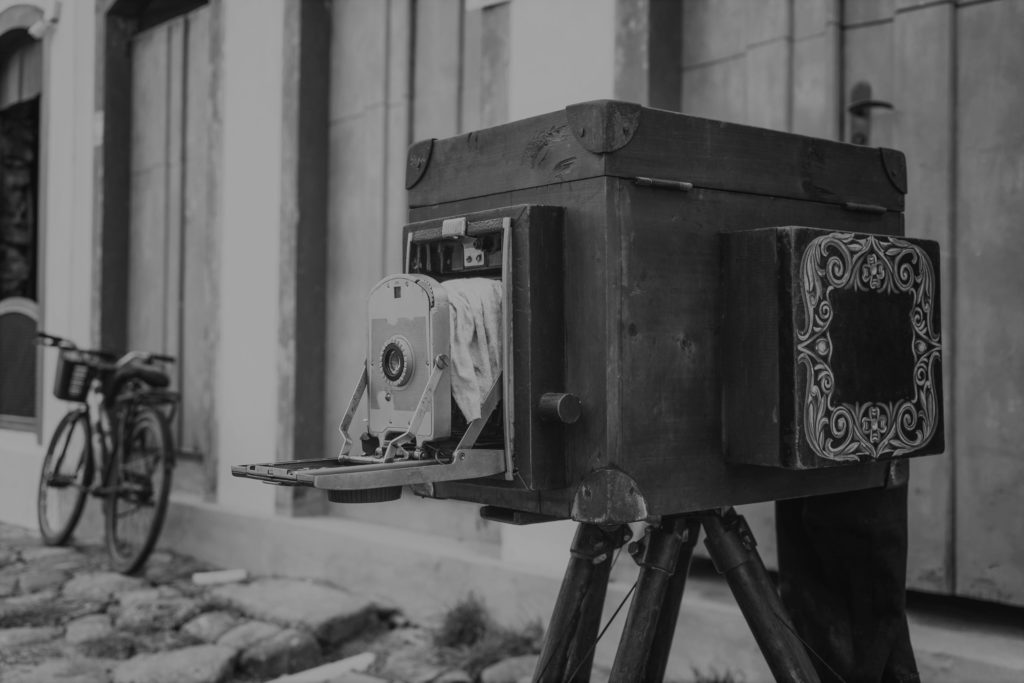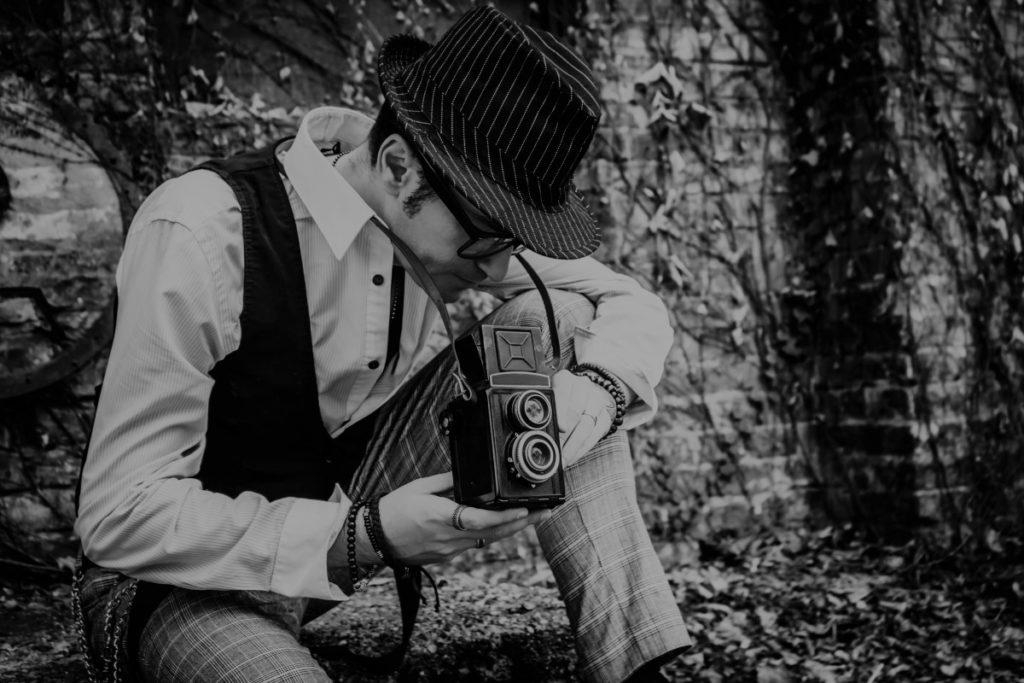Ireland’s beauty is an enchanting tapestry of emerald-green landscapes, rugged coastlines, and mist-covered mountains. Its rolling hills, ancient castles, and picturesque villages evoke a sense of timeless charm. From the stunning Cliffs of Moher to the serene lakes of Killarney, Ireland’s beauty is a testament to nature’s artistry and the country’s rich cultural heritage.
Even if we have never visited, we can experience its beauty through photographs and videos.
However, imagine a world without pictures to capture these beautiful scenes or special memories.
Hard to imagine, right?
This article shall explore photography’s history, growth, and development in Ireland. It will cover how it started, prominent Irish photographers and photography societies, how Ireland’s political and social climate affected the kind of pictures taken, the technological advancement in Ireland photography, and so on.
See how you can create your own photo family tree in minutes with 64smiles.
Background and Key Pioneers of Photography in Ireland

Photography in Ireland can be traced to the early 19th century.
The country’s rich culture and history profoundly contributed to its photography art. From the discovery of the camera obscura to the latest advent of digital photography and mobile phone cameras, it is essential to discuss the pioneers of photography in Ireland who have used their art to create beautiful stories.
Some of them are:
- Sir John Herschel (1792-1871): Sir Herschel was a polymath. On the 9th of September, 1839, he unveiled the earliest photograph on glass. The photograph was of a 40-foot telescope that his father had built. He experimented with and founded several photographic processes, notable among them being the Cyanotype. The Cyanotype involved exposing a piece of paper or fabric coated with a light-sensitive solution to sunlight. He coined the terms “photography,” “snapshot,” “positive,” and “negative.”
- Frederick Brockschmidt (1826-1894): Frederick was one of the most renowned portrait photographers of his time. He built and managed a photography studio in Ireland in the mid-19th century.
- William Despard Hemphill (1816-1902): Hemphill was a chemist and physician. He is credited with capturing some of the earliest photographic images of Ireland. He introduced the daguerreotype process to Ireland in the 1830s. In 1839, he became one of the first practitioners of the daguerreotype after obtaining the necessary chemicals and equipment to produce them.
- Richard Beard (1801-1885): He was an English entrepreneur who became famous in 1840 for establishing the first commercial photography studio in Dublin.
- Sir Robert Ball (1840-1913): Sir Robert was an astronomer and mathematician. His enthusiasm for the photographic process led him to use pictures to document astronomical events and contributed to the advancement of celestial photography.
The Emergence of Irish Photography Societies
Consequent to the peaking interest of Irish people in photography, the late 19th and early 20th centuries witnessed a flood of photography societies and communities. These societies helped foster the exchange of photography ideas and inspiration and provided an avenue for networking for photographers.
The surge in the number of photography societies resulted in the emergence and popularity of several talented photographers. Some of the most popular societies were:
Dublin Camera Club (DCC): This 1945-established club is one of Ireland’s oldest and most popular photography societies. It played a major role in spreading the gospel of Pictorialism and artistic photography. The society, supported by various prominent photographers of that era, hosted workshops, lectures, and demonstrations on various photographic techniques. Not only did it provide a learning environment, but it also provided a platform for photographers to showcase their works through exhibitions and competitions, and networking.
Belfast Natural History and Photographic Society (BNHPS): BNHPS was established in 1863. This society was initially created for the growth of natural history but eventually adapted its scope to cover photography— due to its members’ widespread interest. The society helped foster a community of photographers by organizing competitions, lectures, and exhibitions.
Irish Photographic Federation (IPF): IPF was established as a National photography organization in 1981. It was an umbrella body bringing various photography clubs and societies together to foster unity and uniformity. It continues to play a significant role in promoting photography in Ireland to date.
Pictorialism: This was more of an artistic movement that started in the late 19th century. The photographers believed photography could be on the same status as fine art by emphasizing the creative expressions and aesthetics of the pictures. These photographers aimed to evoke emotions in the admirers of their photographs, leaving them to make subjective interpretations of the ideas conveyed by the images. The photographers used photography manipulation techniques like soft focus, manipulation of light and shadow, and elaborate printing processes.
Other photography clubs: As the pioneer photography clubs gained relevance, more clubs were established. Some of them are:
- Limerick Camera Club
- Cork Camera Club
- Ulster Photography Circle
Travel Photography in Ireland

As photography became a sensation in the 19th century, photographers started exploring and capturing significant landscapes and historical sites while documenting Ireland’s cultural richness. These photographs travelled around the country with their large-format cameras and equipment, capturing images of local traditions and beautiful sceneries.
Many photographers focused on capturing Irish villages and their local way of life. They documented festivals, traditional music sessions, and religious ceremonies. Their images were eventually used in posters, publications, travel brochures, and so on, attracting many tourists to explore the rich culture of Ireland. Read more about vintage photos and the secrets they might reveal.
Studio Photography in Ireland

Studio photography began in the mid-19th century following the advancement of camera technology, the increase in demand for professional portraits, and, most importantly, the accessibility of photographic supplies. These studios were a serene and controlled environment for photographers to capture formal portraits and family portraits and document important milestones.
Studio photography was focused on formal portraits of notable figures, individuals, and families in a controlled space. Elements like lighting techniques, backdrops, and props were incorporated to manipulate the aesthetics of the photos.
Within a short period, studio portraits became a symbol of wealth, social status, and identity. The portrait subjects often adorned themselves in their best attires and posed in a manner suggesting how affluent they were. Old family photos are a treasure trove – read why here.
The Advent of Photojournalism in Ireland

Photo courtesy of ireland-information.com
Over the years since the advent of photography, many photographers have sought to use their pictures to tell stories and draw attention to political and social happenings in the country. In the late 19th century and early 20th century, photographers Robert French and Lawrence Collection documented the change in Ireland’s social climate. Photographers like Alpho O’Reilly, Thomas Johnson Westropp, and Lawrence Collection captured images of political rallies and events that shaped Ireland’s journey towards independence.
The mid-20th century was a significant milestone for photography in Ireland; it ushered in the age of photojournalism. The photographers began to lean into the storytelling aspect of photography by capturing thought-provoking images and important political and social movements and events.
Events ranging from political rallies to civil rights demonstrations were captured, including the Civil Rights marches in Northern Ireland and protests against the Vietnam War. Through the works of these photographers, their people could understand the current happenings in Irish society. They also shaped public opinion on a wide range of topics and catalyzed social change.
The growth of newspapers and magazines also provided a platform for photojournalists to broaden their audience reach. Several publications like The Irish Times, Irish Independent, and so on featured images that helped to illustrate the extent of political and social issues being discussed during the period.
History of Ownership of Cameras in Ireland

The history of camera ownership can be traced to the late 19th century. Between then and now, the technology of cameras and photography has gone through several advancements. Let’s look at how photography has evolved through a technological lens.
Cameras were a very unique innovation when they were first discovered in the 19th century. Because it was a relatively new technology, it was primarily in its testing stage. However, in the late 19th century, cameras had already become more accessible with the advent of consumer cameras. One such camera was the Kodak Brownie introduced in 1900, which made a lot of waves in that period. It was one of the first affordable and ready-to-use cameras available to the public. It used simple roll film technology and required only a decent technical knowledge.
The introduction of this camera popularized amateur photography. People began to purchase cameras for personal use— portraits and documenting everyday life, family occasions, and travel experiences. Photography soon became a hobby among people who could afford it.
Another wave of technological advancement in the 20th century ushered in portable 35mm format cameras. These cameras were smaller, compact, and user-friendly making photography more accessible and appealing to a broader audience. Soon enough, later in the 20th century, digital cameras began to replace film-based cameras slowly. Photographers were able to capture and store images electronically. With the new wave of the internet and the accessibility of affordable digital cameras, there was a surge of interest in photography.
Photography in Ireland in the 21st Century

Photography has now become a part of our everyday life.
The integration of cameras into mobile phones has revolutionized photography in Ireland and worldwide. Photography has evolved into a means of self-expression and documentation. Almost everyone has access to cameras on their phones with several gigabytes worth of storage.
Today, a wide variety of camera options are available to suit everyone’s needs and budget. From casual enthusiasts to professional photographers, the Irish people have wholly embraced photography.


